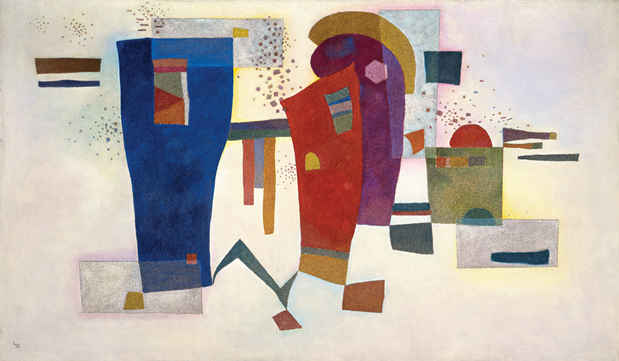“Kandinsky in Paris, 1934–1944” Exhibition
Guggenheim Museum

This event has ended.
Perhaps more than any other 20th-century painter, Vasily Kandinsky has been linked to the history of the Guggenheim Museum. The collection includes over 150 of his works, which are regularly presented in a dedicated gallery at the museum. The current selection, Kandinsky in Paris, 1934–1944, examines the last 11 years of his life. After the Nazi government closed the Berlin Bauhaus (where he had been a teacher) in 1933, Kandinsky settled in the Parisian suburb Neuilly-sur-Seine. In France, his formal vocabulary changed, and diagrams of amoebas, embryos, and other primitive cellular and plant forms provided the sources for the whimsical biomorphic imagery that would be predominant in his late paintings. Instead of his characteristic primary colors, Kandinsky favored softer, pastel hues—pink, violet, turquoise, and gold—reminiscent of the colors of his Russian origins. He also increasingly experimented with materials, such as combining sand with pigment. While Kandinsky found that his art had affinities with Surrealism and other abstract movements in Paris, he never fully immersed himself in the city’s artistic environment. Drawn from the museum’s permanent collection, this intimate presentation features paintings from a prolific period of Kandinsky’s career.
[Image: Vasily Kandinsky, Accompanied Contrast (Contraste accompagné), March 1935. Oil with sand on canvas, 38 1/4 × 63 7/8 inches (97.1 × 162.1 cm). Solomon R. Guggenheim Museum, New York, Solomon R. Guggenheim Founding Collection, By gift, 37.338. © 2013 Artists Rights Society (ARS), New York/ADAGP, Paris]
Media
Schedule
from June 28, 2013 to April 23, 2014